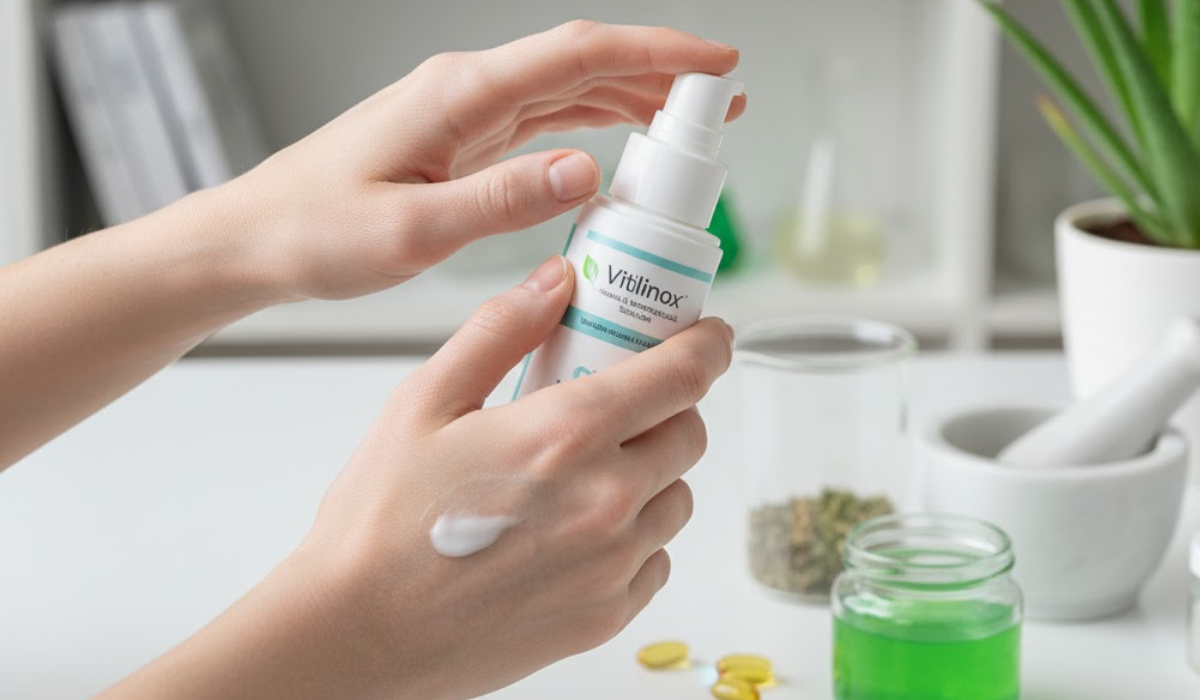Vitiligo has long been one of the most challenging dermatological conditions to treat effectively. Characterized by the loss of pigment-producing cells known as melanocytes, it leads to irregular white patches across the skin. For many, the condition not only affects appearance but also deeply influences self-esteem and emotional well-being. In the evolving landscape of vitiligo research and treatment, Vitilinox has emerged as a notable natural therapy that aims to assist the process of skin re-pigmentation while supporting the immune system from within.
While not a cure for vitiligo, Vitilinox represents an integrative approach that aligns modern nutritional science with dermatological care. This article provides an in-depth exploration of what Vitilinox is, how it functions, what evidence supports its use, and the broader context in which it may be applied responsibly.
Understanding Vitiligo and Its Complex Nature
Vitiligo is an autoimmune condition in which the body’s immune cells mistakenly attack melanocytes — the specialized skin cells responsible for producing melanin, the pigment that gives skin, hair, and eyes their color. Once melanocytes are destroyed or weakened, the affected areas lose pigment and appear as white or pale patches.
The precise cause of vitiligo remains uncertain, though factors such as autoimmune dysfunction, oxidative stress, genetic predisposition, and environmental triggers play significant roles.
Current medical treatments for vitiligo often include:
- Topical corticosteroids to reduce inflammation.
- Calcineurin inhibitors like tacrolimus or pimecrolimus for sensitive areas.
- Phototherapy (Narrowband UVB) to stimulate melanocyte activity.
- JAK inhibitors such as Ruxolitinib (Opzelura), an FDA-approved topical option.
Despite these developments, treatment responses vary widely, prompting many individuals to explore natural or complementary approaches such as Vitilinox.
What Is Vitilinox?
Vitilinox is presented as a dual-form natural therapy designed specifically for individuals coping with vitiligo. It comes in two complementary formulations:
- Vitilinox Pigmentation Cream – A topical preparation intended for direct use on depigmented areas.
- Vitilinox T-Cell-V Capsules – A dietary supplement containing vitamins, minerals, and antioxidants that support immune balance and melanocyte function.
Together, these two components aim to address both the external manifestations of vitiligo (through skin restoration) and the internal immune irregularities often linked to its progression.
How Vitilinox Works
Vitilinox is based on the principle of supporting melanogenesis — the biological process responsible for melanin production — and immune modulation to reduce autoimmune aggression against melanocytes.
1. The Topical Approach
The Vitilinox Pigmentation Cream is applied directly to affected areas once or twice daily on clean, dry skin. It is believed to:
- Penetrate the upper layers of skin to stimulate dormant melanocytes.
- Promote localized re-pigmentation through enhanced tyrosinase activity (a key enzyme in melanin synthesis).
- Support microcirculation and provide antioxidant defense against oxidative stress, which can damage pigment cells.
2. The Internal Approach
The T-Cell-V Capsules work internally to strengthen the body’s immune balance and provide nutritional cofactors vital for melanin production. These capsules typically include:
- Zinc and Selenium – Known for their antioxidant and immune-regulating roles, helping reduce oxidative damage to melanocytes.
- Vitamin D3 – Regulates immune function and enhances tyrosinase enzyme activity, promoting pigment production.
- Vitamin B-complex and Folic Acid – Essential for cellular repair, DNA synthesis, and skin regeneration.
- Other micronutrients – That may collectively aid in reducing inflammation and stabilizing immune responses.
This dual-action approach sets Vitilinox apart from conventional single-line treatments, offering a holistic perspective toward vitiligo management.
Potential Benefits of Vitilinox
While clinical data on Vitilinox remain limited, its formulation aligns with known scientific principles of skin and immune health. The potential benefits may include:
- Support for natural re-pigmentation: By promoting melanocyte activity both externally and internally.
- Immune system regulation: Helping to modulate overactive immune responses responsible for pigment loss.
- Reduction of oxidative stress: Through antioxidant-rich nutrients.
- Non-steroidal and natural composition: Making it suitable for individuals sensitive to pharmaceutical formulations.
- Complementary use: May be used alongside conventional therapies under medical supervision.
It is essential to emphasize that results may vary significantly between individuals, and Vitilinox should be viewed as supportive care, not a stand-alone cure.
Scientific Context and Evidence
Currently, the scientific literature offers limited peer-reviewed studies directly validating Vitilinox’s efficacy. However, individual components of its formulation — such as zinc, vitamin D3, selenium, and folic acid — are supported by dermatological research highlighting their roles in skin pigmentation and immune balance.
For example:
- Zinc deficiency has been associated with increased oxidative stress in vitiligo patients.
- Vitamin D3 supplementation has shown potential in enhancing pigmentation in combination with UV therapy.
- Folic acid and vitamin B12 have demonstrated supportive effects when used alongside phototherapy in several small-scale studies.
Thus, while Vitilinox’s complete formulation awaits comprehensive evaluation, its nutritional foundation aligns with established dermatological science.
Limitations and Considerations
Like many natural therapies, Vitilinox has certain limitations that users must understand:
- Lack of clinical trials: No major published studies confirm its efficacy or long-term safety.
- Not FDA-approved: It is not officially classified as a medical treatment for vitiligo.
- Variable outcomes: Response rates may differ based on vitiligo type, duration, and immune factors.
- Cost and continuity: Long-term use may be costly and results may require consistent application.
Anyone considering Vitilinox should consult a qualified dermatologist or immunologist, particularly if using other medical treatments simultaneously.
Best Practices for Using Vitilinox Responsibly
If you choose to incorporate Vitilinox into your vitiligo management plan, follow these practical steps:
- Seek professional advice before starting, especially if you are on medication or have other health conditions.
- Apply the cream consistently on clean, dry skin once or twice a day as directed.
- Take the T-Cell-V capsules with a meal for optimal absorption.
- Document progress with photographs every few weeks to monitor gradual changes.
- Avoid sun exposure without protection, as depigmented skin is more sensitive to UV damage.
- Maintain emotional wellness, as vitiligo can have psychological impacts—support groups or counseling can help.
Vitilinox in Context: A Holistic Option
Vitilinox represents a growing shift toward integrative dermatology, where traditional medical interventions are complemented by nutritional and natural approaches. Its philosophy aligns with the belief that healthy skin begins with internal balance — particularly immune and oxidative health.
However, it should never replace evidence-based medical care. Instead, Vitilinox may serve as a supportive adjunct, particularly for individuals in the early stages of vitiligo or those seeking non-invasive alternatives alongside medical guidance.
Frequently Asked Questions (FAQs)
1. Is Vitilinox a cure for vitiligo?
No. Vitilinox is not a cure. It aims to support natural pigmentation and immune health but should not replace professional medical treatment.
2. Can Vitilinox be used with phototherapy or medical creams?
Yes, it may be used alongside standard treatments, but always under a dermatologist’s supervision to avoid unwanted interactions.
3. How long does it take to see results?
Results vary. Some individuals report early signs of improvement after several weeks, while others may require months of consistent use.
4. Is Vitilinox safe for all skin types?
Generally, it is formulated for all skin types, but a patch test or professional consultation is advised to rule out allergies.
5. Are there side effects associated with Vitilinox?
Mild skin irritation may occur in rare cases. Internal supplements should also be taken as recommended to avoid excess vitamin intake.
6. What role does diet play in vitiligo management?
A balanced diet rich in antioxidants, zinc, and vitamins can support pigment health and immune stability — complementing treatments like Vitilinox.
7. Can children use Vitilinox?
Consult a pediatric dermatologist before administering any supplement or topical treatment to children.
Conclusion
Vitilinox offers a thoughtful, natural-based approach for individuals navigating the complex journey of vitiligo management. By combining topical and internal support, it aligns with the growing recognition that skin health is both an external and internal process.
While its clinical evidence is still developing, its emphasis on immune balance, nutritional support, and melanocyte stimulation positions it as a potentially valuable addition to integrative skincare strategies. Nevertheless, dermatological guidance remains essential to ensure safety, suitability, and effectiveness within a comprehensive treatment plan.

